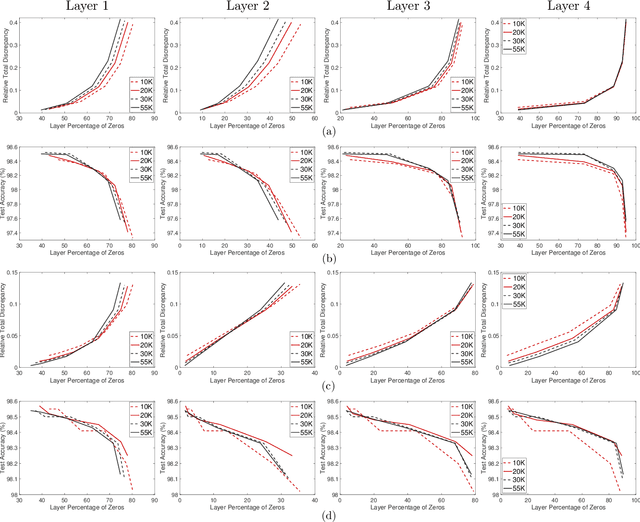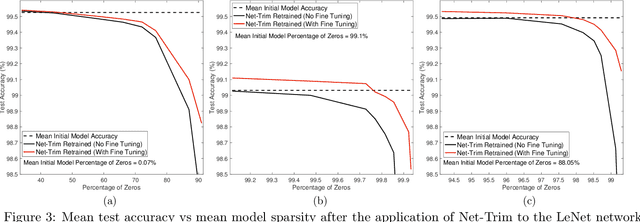Fast Convex Pruning of Deep Neural Networks
Paper and Code
Jun 17, 2018



We develop a fast, tractable technique called Net-Trim for simplifying a trained neural network. The method is a convex post-processing module, which prunes (sparsifies) a trained network layer by layer, while preserving the internal responses. We present a comprehensive analysis of Net-Trim from both the algorithmic and sample complexity standpoints, centered on a fast, scalable convex optimization program. Our analysis includes consistency results between the initial and retrained models before and after Net-Trim application and guarantees on the number of training samples needed to discover a network that can be expressed using a certain number of nonzero terms. Specifically, if there is a set of weights that uses at most $s$ terms that can re-create the layer outputs from the layer inputs, we can find these weights from $\mathcal{O}(s\log N/s)$ samples, where $N$ is the input size. These theoretical results are similar to those for sparse regression using the Lasso, and our analysis uses some of the same recently-developed tools (namely recent results on the concentration of measure and convex analysis). Finally, we propose an algorithmic framework based on the alternating direction method of multipliers (ADMM), which allows a fast and simple implementation of Net-Trim for network pruning and compression.
 Add to Chrome
Add to Chrome Add to Firefox
Add to Firefox Add to Edge
Add to Edge